Disclosure: This article contains affiliate links. We may earn a commission from purchases at no extra cost to you, which helps our travel content.
The first time I visited Rabat, I was a skint university student with big dreams and an embarrassingly small travel budget. What I lacked in dirhams, I made up for in curiosity, which led me down narrow alleyways and into the heart of Morocco's most underrated culinary scene. Ten years later, I've returned countless times, and while my bank account might be marginally healthier, my approach remains the same: follow your nose, eat where the locals eat, and never—I repeat, never—skip dessert. Unlike its flashier siblings Marrakech and Fez, Rabat doesn't shout about its gastronomic treasures. Instead, this elegant capital city whispers its culinary secrets to those patient enough to listen. So grab your partner's hand (and perhaps loosen your belt a notch) as we embark on a weekend of flavor hunting that won't break the bank.
Morning Markets: Breakfast Like a Local
There's something magical about Moroccan markets at dawn. The medina of Rabat awakens slowly, like a giant stretching after a deep slumber. My favorite way to start a culinary adventure here is to head straight to Souk El Had around 7:30 AM, when the morning light filters through the canvas awnings, creating a kaleidoscope of colors on the ancient walls.
First stop: msemen, those gloriously flaky square pancakes that Moroccans fold with the precision of origami masters. Watching the vendors' hands work the dough is a performance art that never gets old. For about 5 dirhams (50 cents), you'll get a warm square drizzled with honey or stuffed with savory fillings. Pair it with a glass of fresh-squeezed orange juice that tastes nothing like the stuff back home.
Don't miss the baghrir (thousand-hole pancakes) either – these spongy delights soak up honey and butter like nothing else. The best ones can be found at a tiny stall near the spice section, run by an elderly woman who has been perfecting her recipe for decades. She doesn't speak much English, but a smile and an appreciative 'shukran' (thank you) go a long way.
After breakfast, wander through the olive vendors, where dozens of varieties are displayed in conical piles. Most will offer samples – the lemony green ones are my personal weakness. This is also the perfect time to pick up some preserved lemons or harissa paste to take home, vacuum-sealed in your food storage bags to keep your clothes safe from spicy leaks!

💡 Pro Tips
- Arrive before 8 AM to see the market at its most authentic
- Bring small bills (10 and 20 dirham notes) for easier transactions
- Learn the phrase 'bshhal?' (how much?) – vendors appreciate the effort
Lunch in the Kasbah: Ocean Views and Ancient Flavors
By midday, when the sun climbs high above Rabat, there's no better escape than the breezy Kasbah des Oudaias. This blue and white fortress neighborhood feels more like Santorini than North Africa, and its elevated position offers spectacular Atlantic Ocean views.
Tucked away in the heart of the Kasbah is Café Maure, a charming terrace spot where time seems to stand still. Their mint tea ritual is the stuff of legends – servers pour the sweet, fragrant liquid from impressive heights, creating a frothy top that's as much about showmanship as it is about taste. At just 15 dirhams (about £1.20), it's one of the best-value experiences in Morocco.
For lunch, I always order their seafood bastilla – a coastal twist on the traditional sweet-savory pie usually made with pigeon. The delicate layers of pastry conceal a filling of spiced fish, shrimp, and vermicelli, topped with crushed almonds and cinnamon. It's a culinary contradiction that somehow works brilliantly.
If you're visiting on a Friday, join the locals for couscous – the fluffy semolina topped with slow-cooked vegetables and tender lamb is Morocco's traditional end-of-week meal. The portions are generous enough to share, which keeps the cost reasonable for budget travelers.
After lunch, wander through the narrow blue streets, where local artists sell their work. I found my favorite ceramic tagine here years ago, which has traveled with me to Albuquerque and still gets regular use. If you plan to take one home, consider investing in a bubble wrap sleeve – nothing breaks the heart quite like opening your suitcase to find ceramic shards!
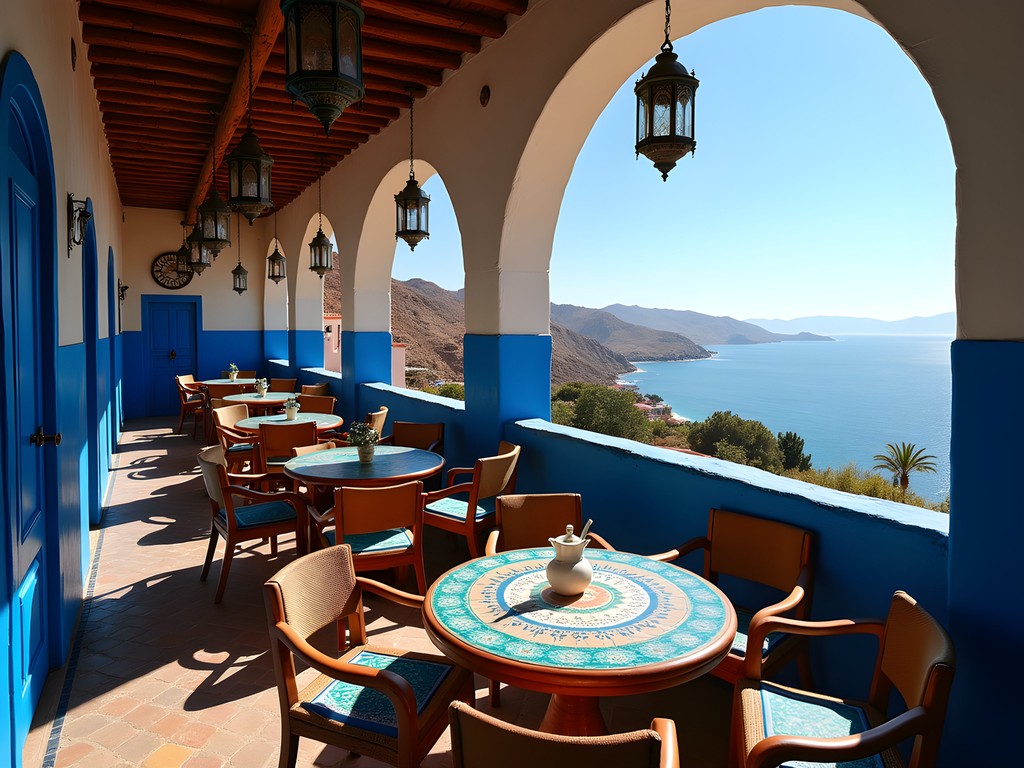
💡 Pro Tips
- Reserve a table by the railing for the best ocean views
- Visit between 2-4 PM when most tourists have left for lunch elsewhere
- Ask for 'atay bil naana bidun sukkar' if you prefer your mint tea without the traditional heavy sweetness
Street Food Safari: Navigating the Medina's Culinary Treasures
As afternoon slides into evening, Rabat's ancient medina transforms into a sensory playground. This is when I swap sit-down meals for a progressive dinner of street food treasures, letting my nose guide the way through the labyrinthine alleys.
Start your street food safari at Avenue Mohammed V, where the modern city meets the old walls, then plunge into the medina's depths. First target: harcha stalls. These semolina flatbreads are griddled until golden and served hot with honey or soft cheese. At about 3 dirhams each, they're the perfect walking snack.
Deeper in the medina, follow the crowds to find the best brochettes – skewers of marinated lamb or chicken cooked over charcoal. The smoke signals are impossible to miss! The vendor near Rue Souika has been my go-to for years; his secret blend of cumin, paprika and something he refuses to divulge creates a flavor that haunts my dreams back in New Mexico.
For the brave (and I do mean brave), the snail soup vendors offer tiny cups of broth teeming with small mollusks that you extract with a toothpick. It's surprisingly addictive, with a broth so aromatic it could revive the dead. Just 10 dirhams buys you a cultural experience few tourists attempt.
End your street food crawl at a hole-in-the-wall place locals call 'the sandwich king' near Bab El Had gate. His kefta sandwiches – spiced meatballs stuffed into fresh bread with tomatoes, onions and a generous dose of harissa – are the stuff of legend. Bring your travel napkins because things get deliciously messy!
Between bites, keep your eyes peeled for the incredible street art that's been flourishing in Rabat. Unlike Marrakech, which restricts most artistic expression to formal galleries, Rabat's walls tell contemporary stories through murals and stencils – a fascinating contrast to the centuries-old architecture.
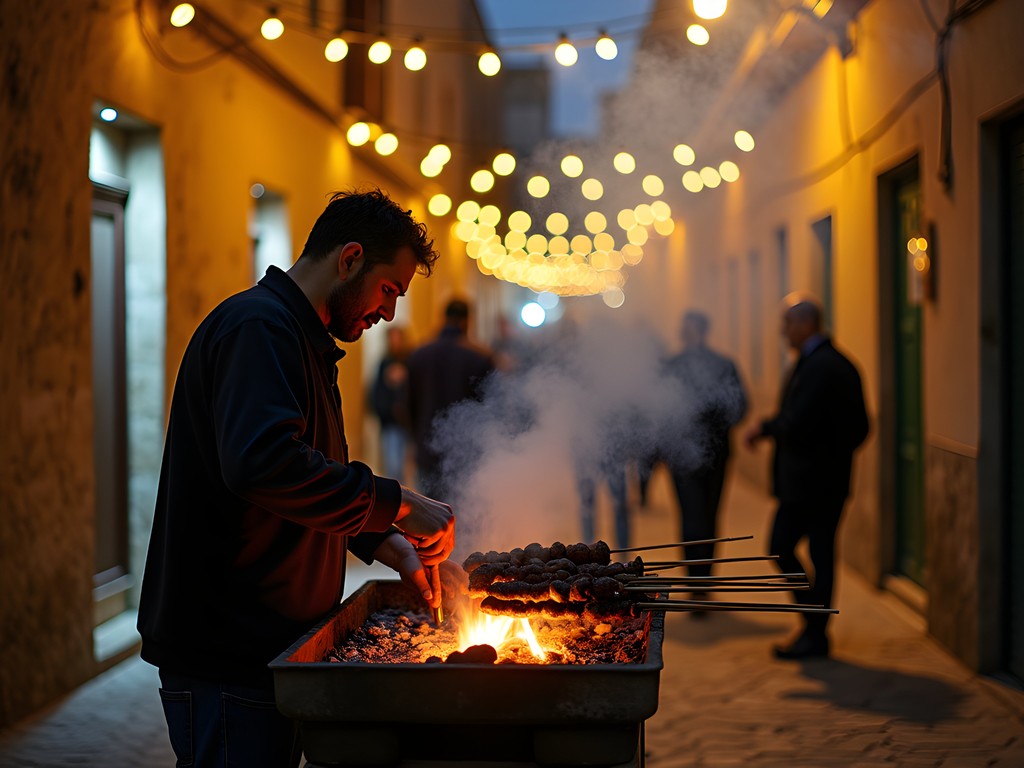
💡 Pro Tips
- Eat where queues of locals form – it's the universal sign of quality
- Always watch your food being cooked fresh; avoid pre-prepared items
- Carry hand sanitizer but don't be overly paranoid – my iron stomach was forged in these very alleyways!
Sweet Endings: Desserts Worth Crossing Continents For
If there's one thing I've learned in my decade-long love affair with Morocco, it's that desserts here aren't just afterthoughts – they're central to understanding the culture. Rabat's sweet scene deserves its own dedicated exploration, preferably with an elastic waistband.
My partner still teases me about the time I made us walk three miles across Rabat in search of the perfect chebakia – those flower-shaped sesame cookies soaked in honey that are traditionally eaten during Ramadan but thankfully available year-round. The best ones are found at Patisserie Majestic near Hassan Tower, where they strike the perfect balance between chewy and crisp, sweet and nutty.
M'hanncha (snake cake) is another must-try – a coiled pastry filled with almond paste and scented with orange flower water. It looks impressive but tastes even better, especially when paired with Moroccan mint tea. For an authentic experience, head to the family-run Patisserie Bennis in the medina, where the recipe hasn't changed in generations.
My personal weakness is kaab el ghazal ('gazelle horns'), crescent-shaped cookies filled with almond paste and dusted with powdered sugar. I've tried recreating them at home in Albuquerque with my stand mixer, but there's something about the Moroccan water – or perhaps the generations of expertise – that makes the original impossible to replicate.
If you're visiting in summer, don't miss the opportunity to try jabane – a refreshing dessert made from fresh cheese, honey, and seasonal fruits. It's the perfect antidote to Rabat's summer heat and surprisingly light after a day of indulgence.
For those with a serious sweet tooth, consider joining one of the pastry workshops offered at Riad Kalaa. For about 300 dirhams (£25), you'll learn the secrets behind these complex confections and take home both recipes and samples. I still use techniques I learned there in my baking adventures back home.

💡 Pro Tips
- Buy sweets by weight rather than pre-packaged for the freshest experience
- Most pastry shops offer tastings – don't be shy about asking to try before you buy
- Sweets make excellent gifts – many shops will vacuum-seal them for travel
Rooftop Romance: Sunset Dining with a View
For couples visiting Rabat, I always recommend saving one evening for a special rooftop dining experience. While the city isn't as famous for its panoramic restaurants as Marrakech, those in the know can find intimate terraces with views that rival anything in Morocco.
My favorite romantic spot remains Dar Naji, tucked away near the Kasbah. Their rooftop offers sweeping views across the Bouregreg River to Salé, Rabat's sister city. As the sun sets, the call to prayer echoes across the water, creating a soundtrack that no Michelin-starred restaurant could ever match.
Their tagines are slow-cooked to perfection – the lamb with prunes and almonds has a depth of flavor that tells stories of centuries of culinary evolution. At around 110 dirhams (£9) per tagine, it's not the cheapest meal in town, but still remarkable value for the quality and setting.
For something truly special, book the corner table at Dinarjat, hidden in an unmarked riad down an unassuming alley. Finding it is half the adventure! Inside, you'll discover a courtyard that transforms into a candlelit wonderland at night. Their pastilla – a sweet-savory pie dusted with cinnamon and sugar – is served with theatrical flair that makes for an unforgettable date night.
If you're celebrating something special, The Dhow floating restaurant moored on the Bouregreg offers a unique dining experience. The converted wooden ship serves excellent seafood with Andalusian influences, reflecting Morocco's complex history. Prices are higher (expect to pay around 350 dirhams/£30 per person), but watching the lights of the Hassan Tower reflect on the water while dining is worth the splurge.
For the best sunset photos from any rooftop, bring along a mini tripod to capture the golden hour magic without the blur. Some of my most treasured Morocco photos were taken during that magical moment when the ancient city walls glow amber against the deepening blue sky.
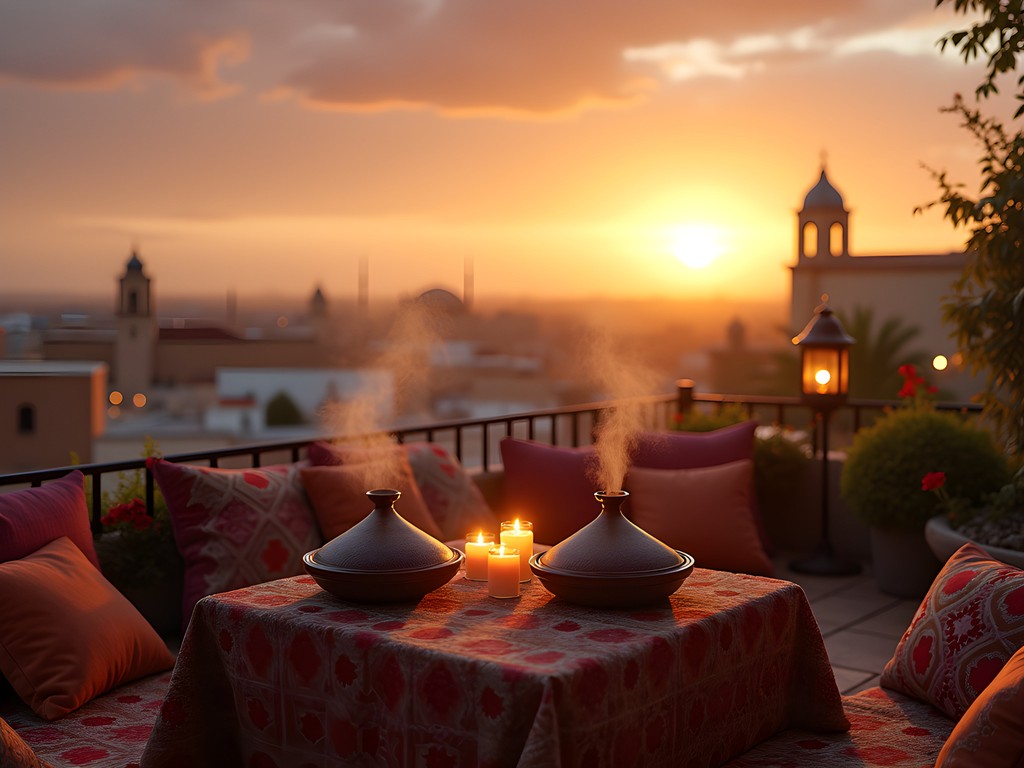
💡 Pro Tips
- Make reservations for rooftop restaurants at least a day in advance
- Request a table with a view when booking – not all tables have equal vistas
- Dress a bit nicer than you would for daytime exploring, but full formal wear isn't necessary
Final Thoughts
As I pack my spice-scented treasures into my suitcase for the journey back to Albuquerque, I'm reminded that Rabat's flavors linger long after the last bite. This elegant capital offers a gentler introduction to Moroccan cuisine than the sensory overload of Marrakech, making it perfect for couples seeking both romance and culinary adventure without intimidation. The city's relative lack of food tourists means authentic experiences come at authentic prices – a weekend of indulgence here won't require a second mortgage. Whether you're licking honey from your fingers at a market stall or clinking glasses on a rooftop at sunset, Rabat serves up memories that will sustain you until your next visit. Because trust me – once Morocco's flavors get under your skin, you'll find yourself plotting your return before you've even left. Bssaha – to your health!
✨ Key Takeaways
- Rabat offers authentic Moroccan cuisine without the tourist markup of Marrakech
- Early morning market visits provide the most genuine food experiences
- Street food offers the best value while maintaining exceptional quality
- Rooftop dining creates memorable romantic experiences at reasonable prices
📋 Practical Information
Best Time to Visit
year-round, though spring (April-May) and fall (September-October) offer ideal temperatures
Budget Estimate
£100-150 per couple for a weekend of eating (excluding accommodation)
Recommended Duration
2-3 days
Difficulty Level
Beginner

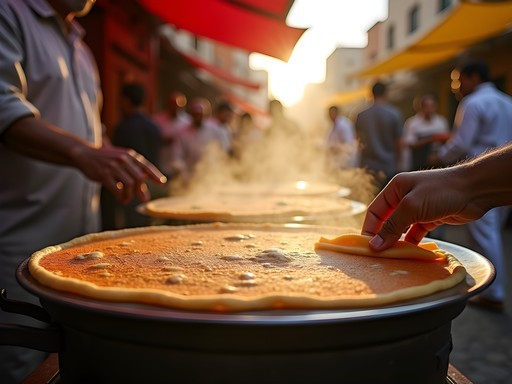
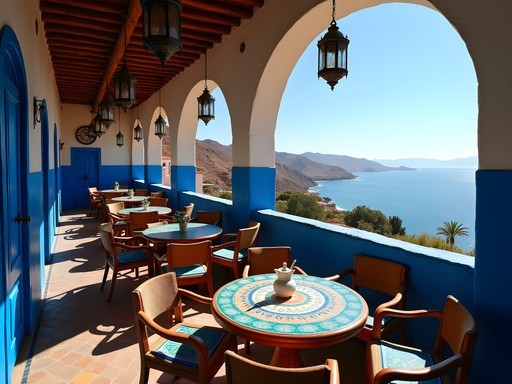
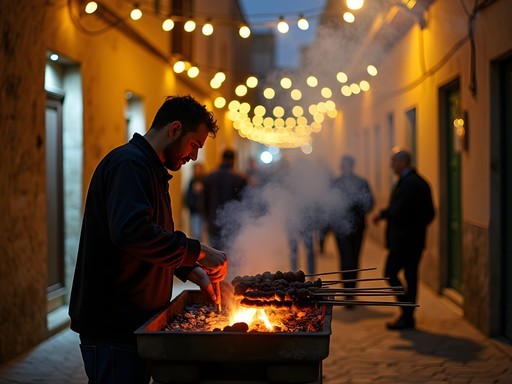

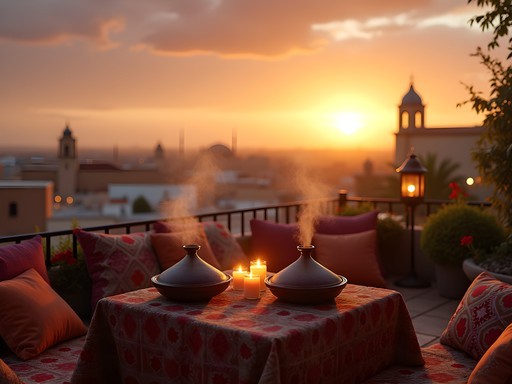


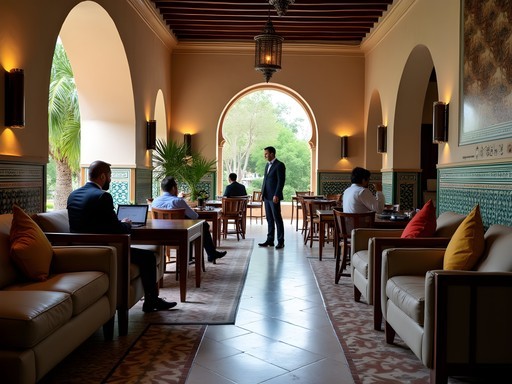




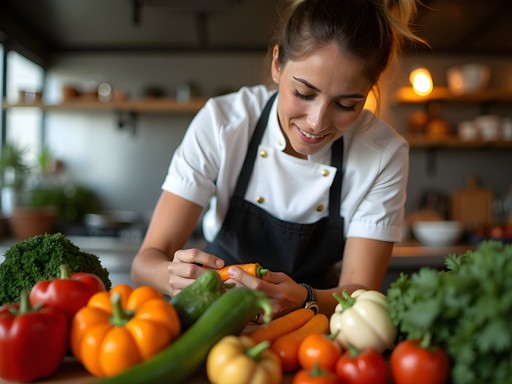
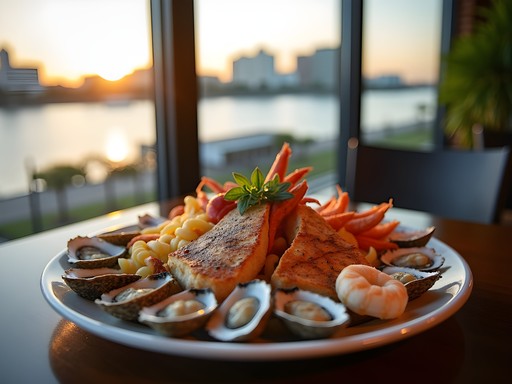
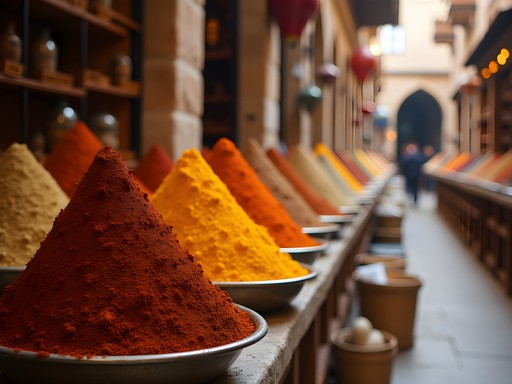
Comments
escapeone
After 15 years of traveling around Morocco, I still think Rabat has some of the most underrated food in the country. Everyone rushes to Fez and Marrakech, but Rabat's coastal location gives it that perfect mix of Atlantic seafood and traditional Moroccan flavors. Genesis - you mentioned the morning markets, but did you ever make it to the Sunday market in Salé (just across the river)? It's less touristy and the bessara (fava bean soup) vendors there make it the old-school way. Worth the trip if you return!
Genesis Ali
I missed the Sunday market in Salé! Definitely adding it to my list for next time - that bessara sounds incredible. Thanks for the tip!
vacationrider
OMG those morning market photos are EVERYTHING!! I can practically smell the spices through my screen! Can't wait to experience this myself someday. Your writing style is so immersive!
wintergal
How vegetarian-friendly did you find Rabat? I'm worried about finding options beyond salads and bread.
Claire Hawkins
Not Genesis, but I can share that my sister is vegetarian and did really well in Rabat! Look for zaalouk (eggplant salad), loubia (bean stew), and vegetable tagines. Many restaurants now understand vegetarianism better than they did years ago. There's a lovely place near the Kasbah called Dar El Medina that has several clearly marked vegetarian options.
wintergal
Thank you so much! That's really reassuring. Will definitely check out Dar El Medina!
globemood
Just booked tickets to Morocco for November. This post couldn't have come at a better time!
Genesis Ali
That's perfect timing for pleasant weather! Feel free to reach out if you need any specific recommendations.
bluelegend
Those desserts look incredible! Especially the chebakia. Mouth is watering!
Mason Sullivan
Genesis, your post brought back so many memories of my backpacking days in Rabat! I stayed in that tiny hostel near Bab El Had and survived almost entirely on street food for two weeks. Still dream about those seafood bastilla from the place near the Atlantic coast - crispy phyllo hiding that savory-sweet seafood filling. Budget travel hack for anyone heading there: bring a small phrase book and learn basic food terms. The vendors appreciate the effort and sometimes throw in extra treats. I found the best deals were always a few streets behind the main tourist paths, especially in the older parts of the medina where locals actually shop.
freetime
Planning my first trip to Morocco next month. Is Rabat good for food-focused travelers on a tight budget? Or should I focus more on Marrakech?
Mason Sullivan
As someone who's traveled Morocco on a shoestring multiple times, I'd actually recommend Rabat over Marrakech for budget foodies! Rabat is less touristy, so prices are more reasonable, and the street food is phenomenal. Try the food stalls near the university - crazy good harcha (semolina bread) for pennies. Marrakech has amazing food too but you'll pay a premium in tourist areas.
freetime
That's super helpful, thanks! Definitely adding Rabat to my itinerary now.
Claire Hawkins
Your morning market description took me right back to our family trip last year! My kids were initially hesitant about the strong aromas and bustling crowds, but by day three they were confidently ordering msemen and pointing out their favorite olive varieties to vendors. We found this lovely older gentleman near Rue des Consuls who made the most incredible amlou that my daughter still talks about. Did you try the mint tea ceremony at Café Maure in the Kasbah? It became our daily afternoon ritual with the kids - they loved the theatrical pouring from height!
travelperson2507
This post is making me hungry! Did you find any particular dish that was unique to Rabat compared to other Moroccan cities?
Genesis Ali
Great question! While many dishes are found throughout Morocco, Rabat has some amazing seafood preparations that reflect its coastal location. The sardine tagine with chermoula in the Kasbah area had a local twist I hadn't found elsewhere. Also, their version of harira soup seemed richer with more seafood additions.
travelperson2507
Thanks for the tip! Definitely adding sardine tagine to my must-try list when I visit next month.
citywalker
That photo of the mint tea pour is perfection! 📸👌
Venture X
Premium card with 2X miles, $300 travel credit, Priority Pass